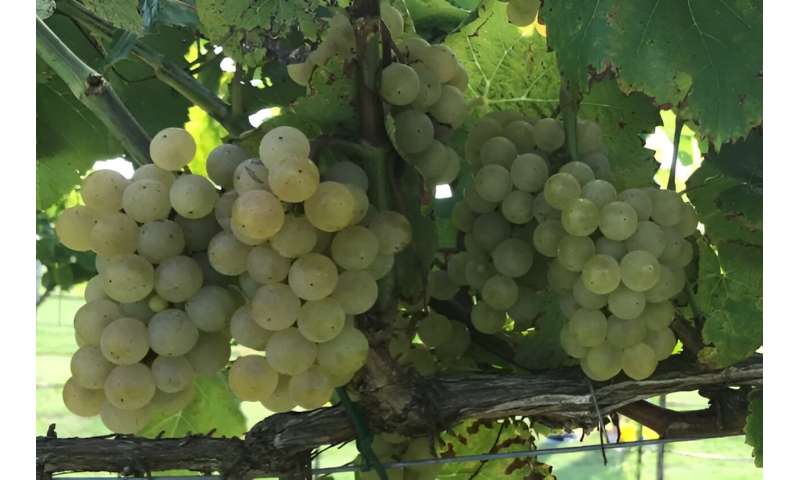Blanc du Soleil: New wine grape for US Southeast

A team of researchers from Texas A&M University, Florida A&M University and the San Antonio Botanical Garden recently introduced "Blanc Du Soleil," a novel wine grape cultivar tailored specifically for the unique climatic conditions of the Southeast United States. The cultivar is well suited for warm grape-growing regions such as Florida, Texas, and the Southeastern United States. It can produce a high-quality wine with varietal character and satisfactory yield. It is the first cooperative release with Texas A&M University.
The paper on this topics is published in the journal HortScience.
Florida and the southern grape industry have always been challenged by the prevalence of Pierce's disease (PD). Previously, the production of bunches of grapes in the area has solely been based on a few hybrid grapes that could adapt to the region's hot-humid climate and be tolerant or resistant to PD. Engineered to withstand the region's high humidity, intense heat, and disease pressures, this cultivar offers vintners a reliable and sustainable option for producing premium-quality wines.
Unlike traditional grape varieties, which often struggle to adapt to the Southeast's climate, Blanc Du Soleil demonstrates exceptional resilience and vigor, ensuring consistent yields and superior fruit quality. Its ability to thrive in warm, humid conditions makes it an ideal choice for vineyards across the Southeast, from North Carolina to Florida..
The clusters of Blanc Du Soleil are medium-sized, often shouldered, and cylindrical. Cluster weights in Goliad, Texas ranged from 79.44 to 106.46 g. In Florida, cluster weights were larger averaging 168.8 to 235.1 g. Blanc Du Soleil clusters are moderately to well filled with medium-sized, light green– to bright yellow–colored berries. Berry weights averaged 1.97 g in Industry, 1.84 g in Goliad, and 2.90 g in Tallahassee.
Wine pH was lower and titratable acidity was higher for Blanc Du Soleil at both locations in Texas, which may be valuable for warm climate regions where high pH may result in problems with wine stability. Wine pH and titratable acidity of Blanc Du Soleil ranged from 3.09 to 3.20 and 6.8 to 8.9 g/L, respectively, in Texas. In Florida, wine pH ranged from 3.06 to 3.22 and titratable acidity ranged from 8.2 to 9.8 g/L.
The most valuable characteristic of Blanc Du Soleil is its survival capacity and high fruit and wine quality potential in the Gulf Coast, a region of the United States that has extreme pressure from PD. Although formal testing for PD tolerance has not occurred, its survival and lack of symptoms for 23 years suggests tolerance or some level of resistance. Vine survival at all sites was 100% over the course of evaluation. Furthermore, both parents of Blanc Du Soleil are tolerant to PD.
Blanc Du Soleil is a promising white wine grape variety suitable for cultivation in the southern United States. It boasts high-quality potential and strong resistance to diseases, particularly Pierce's Disease (PD), which is a significant concern for grape growers in the region. Its disease resistance makes it a valuable option for areas prone to PD, offering both quality and reliability to growers.
More information:
Justin Scheiner et al, 'Blanc Du Soleil': A Wine Grape for the Southeast United States, HortScience (2023). DOI: 10.21273/HORTSCI17032-22
Provided by American Society for Horticultural Science